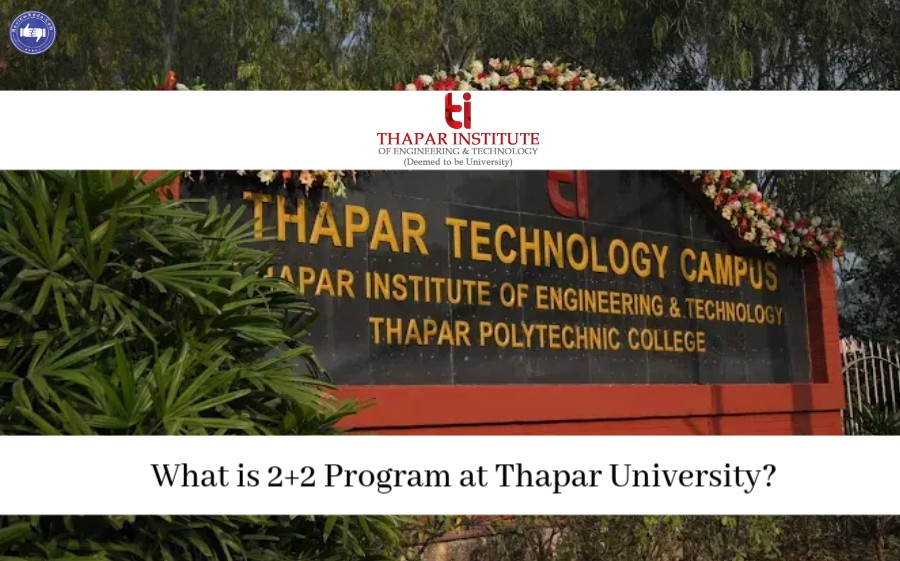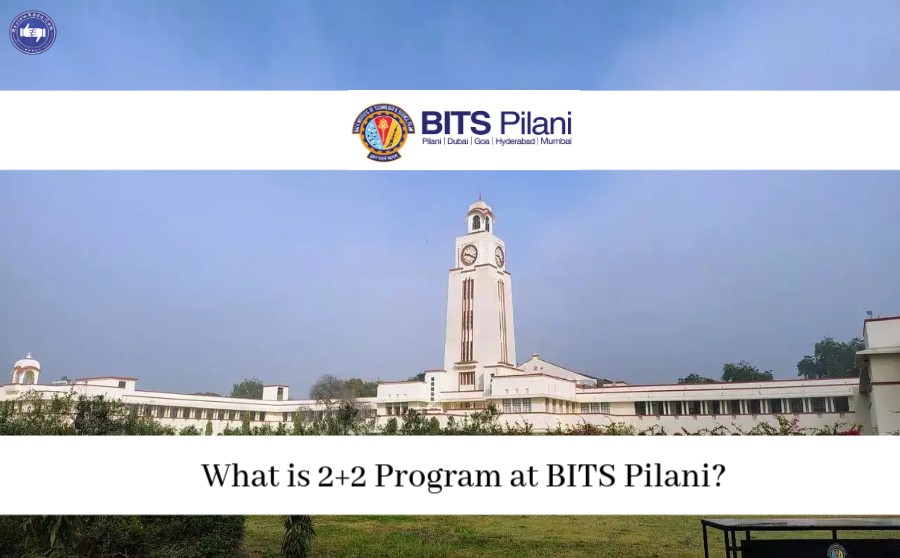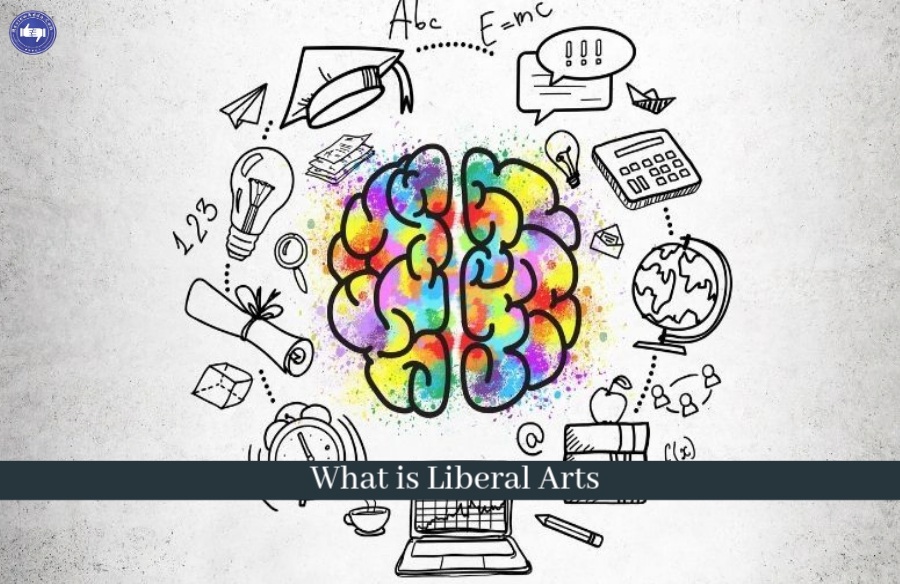Topic We Cover: UPES vs DIT vs Graphic Era
1. The Factors
- Placements
- Student perception of a given college/university
- Infrastructure
- Student-to-faculty ratio (StF)
- Affordability
2. University of Petroleum and Energy Studies [UPES], Dehradun
- UPES Academics
- UPES Course Details
- UPES Placements
3. Dehradun Institute of Technology [DIT] University, Dehradun
- DIT Academics
- DIT Course Details
- DIT Placements
4. Graphic Era University, Dehradun
- Graphic Era University Academics
- Graphic Era University Course details
- Graphic Era University Placements
5. ICFAI University Dehradun
- ICFAI University Academics
- ICFAI University Course Details
- ICFAI University Placements
6. The Comparison
Dehradun seldom appears in discussions when students talk about the Best Engineering & Management Colleges in the country. Not just Dehradun, but Uttaranchal on a whole is often found lacking compared when it comes to the presence of quality Higher Education Colleges.

UPES, DIT, Graphic Era and ICFAI are amongst the best universities in Uttaranchal
The ascent in reputation and trust in institutions such as UPES, DIT, Graphic Era University and ICFAI has helped the cause of education in the state to some extent. While most students had to choose alternatives in adjoining states such as Delhi, Punjab and UP until only a few years ago, this is no longer the case.
These universities have come up and offered an alternative to aspirants from Uttaranchal. Udbhav Singh*, a graduate from JIIT Noida was amongst the many students from Uttaranchal who had to leave their home to pursue UG education.
‘I moved heaven and earth to clear IIT-JEE. However, I couldn’t make it. My plan was to join IIT Roorkee as it was the closest college from Dehradun which was worth going to. When I eventually failed, I had to slowly resign to my fate and prepare to apply to colleges outside Uttaranchal’
Udbhav is not alone. Many students at that time had to take the difficult decision of moving away from home. ‘It is never easy to take that leap. I had always lived with my parents under a cloud of safety and security. To consider moving away was a decision I agonised over for days upon days. It wasn’t until I was left with no option did I finally decide to go to Delhi and find a college’
Udbhav now works as a software engineer in Noida. His family moved to Noida last year as well, much to the relief of Udbhav. ‘After college, I worked in Noida for five years. My parents wanted me to come back, but there was simply no job prospect in Dehradun which could further enhance my career. I instead decided to bring my family to Delhi. After spending long hours on the phone trying to convince them, they finally agreed;
When we asked him about the emergence of new colleges and Universities in Dehradun, his eyes lit up. ‘If that was the case in my time, I would have never moved away from home. It is good for students from Uttaranchal to be closer to home. Not just Uttaranchal, but students from all states should atleast have the option to take up a decent course from a college which isn’t a million miles away from home. I’m not saying we should have an IIT in every state. However, a decent college in every city is not too much to ask for’
Udbhav is not wrong about the need for quality institutions across the country. Students should not be forced to leave their home to pursue UG education.
The Factors
Before analyzing the each college separately, it is necessary to establish the factors we’ll be using to compare the given four institutions. These factors are not necessarily independent of each other, but each represents the most common questions every student has while choosing a institute for admission.
They are listed below:
1. Placements
The main reason students are willing to pay high college fees is the promise of a nice cushy job at the end of the course. If such a ‘quid-pro-quo’ didn’t exist, most students would rather choose less popular courses at Government Colleges than pay a high college fee for nothing.
As economists often suggest, humans are driven by incentives. In the case of colleges and universities, especially private institutions, the incentive is most commonly seen to be placements. While this may seem like an unhealthy way of looking at college education, we have to incorporate present-day factors to compare these colleges.
2. Student perception of a given college/university
People in any kind of business often tend to dismiss outside perception as merely ‘uninformed opinion’. They may not be wrong, but the impact of perception itself cannot be overstated.
The importance of perception can be understood best by analyzing the stock market and more specifically, specific stocks. For instance, a company embroiled in a controversy is sure to see its stock nosedive, even if it didn’t do anything wrong. The power of perception rules the stock market.
Universities and colleges are also greatly influenced by student perception. For instance, the controversy surrounding Alliance University and its administration severely dented its perception amongst students. As of now, most MBA aspirants are apprehensive about Alliance, even through the dispute has ended.
Perception can also protect top colleges from getting maligned. Let us consider the rampant increase in the rate of suicides at IITs. Last year from January to April, four IITians committed suicides, three of them being from IIT Kharagpur. However, when it came to IIT Admission counselling in the same year in June, most incoming students didn’t care about the suicides. Why? Because it’s the IITs after all.
As you can now understand, even important issues such as rate of student suicides can be hidden by the rapturous blanket of perception. If a college is perceived well, half of its problems are automatically solved
Though objectively placements are the most important factor, the choice of selecting a college or university ends up becoming a highly subjective exercise in most cases. The student perception of a given college/university is shaped by a number of factors.
3. Infrastructure
Infrastructrure is the lifeblood of any given educational institution. This factor is not about the presence of fancy building and sprawling gardens, but about the availability of the necessary facilities for any given student to excel.
In today’s day and age, the definition of good infrastructure at a college has severely changed. Even still, we will stick to the old school way of measuring a college’s infrastructural capabilities. This will include the presence of facilities for research, faculties for quality teaching and a sound curriculum for maximum learning.
4. Student-to-faculty ratio (StF)
Imagine you’re in a small classroom crammed with 70 students. You’re sitting right in the middle of the classroom, surrounded by a swarm of students. Furthermore, you’re unable to listen to what the teacher is teaching.
Does this sound like the ideal college life?
This is where the importance of student-to-faculty ratio comes into the picture. A college which doesn’t have the ideal number of faculties usually ends up getting embroiled in logistical issues such as overcrowded classes and faculty fatigue. The ideal student to faculty ratio accepted across all boards is usually agreed to be at 10:1.
5. Affordability
Affordability is a key deciding factor for students looking to start their UG education, especially in the case of Private Colleges. In most cases, spending money on a degree usually comes down to risk analysis. If the fee of the college is too high, students tend to pass over that particular institution as the risk is too high.
For e.g. if a student was eligible for Admission to BITS, he/she wouldn’t think twice before joining despite the high fee. However, if the same fee or even one marginally less was demanded at a second tier college, the student would be less willing to take that risk.
University of Petroleum and Energy Studies [UPES], Dehradun
UPES was established in 2003, becoming the first institution in the country at the time to offer Engineering Courses for petroleum and energy studies. 15 years on, it has expanded into one of the Biggest Universities in the State offering courses from wide ranging fields such as management, law design, architecture, and its initial offering, engineering.
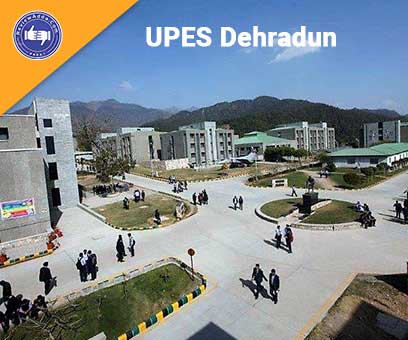
UPES is often counted amongst the Best Engineering Colleges in North India
The bodies which have accredited UPES include UGC, NAAC and BCI. It is also a member of the Association of Indian Universities and a part of Laureate International Universities Network. Furthermore, UPES also holds the distinction of being the first and only university is Asia to be awarded the World Oil Award.
Though many courses are offered at UPES, its research output is highly concentrated in fields like petroleum and energy.
UPES Academics
The many courses at UPES are offered through constitutent departments called ‘schools’. Each school has sub-departments, which streamlines the entire academic process. The various schools at UPES are
- School of Engineering[B.Tech, M.Tech and PhD programs]
Consist of sub-departments which are divided into various fields of engineering such as petroleum, chemical, mechanical, civil, instrumentation, health & safety, aerospace, electrical, and nuclear science.
- School of Business [BBA, MBA and PhD programs]
Consist of sub-departments which are divided into various fields of management. Some schools are especially dedicated to impart business skills applicable to particular sectors. These departments include strategic management, accounting & finance, HR, operations, oil & gas, power & infrastructure, transportation, economics, IB, IT, logistics, supply chain management, and marketing.
- School of Legal Studies [BA+LLB, BBA+LLB, B.Com+LLB, B.Tech+LLB and LLM]
Besides basic law courses, the School of Legal Studies also offers specialized courses for students in special fields such as corporate law, energy law, taxation law, IPR, and cyber law.
- School of Design Studies[B.Des and M.Des]
The main focus of the School of Design Studies is to train students for the rigors of the design industry which are often alien to college graduates. Concepts relating to transportation, industrial and product development are imparted to build a graduate with a coherent profile and a cohesive knowledge of the design industry.
- School of International Law and Diplomacy[MA]
This school was established by UPES to train future government employees, public service professionals and leaders capable of addressing challenges on a national and international scale.
- School of Planning and Architecture [B.Plan and M.Plan]
The School of Planning and Architecture fashions to develop multi-faceted skills amongst students which would eventually help them in meeting the various challenges posed in the vocation of planning a build environment.
- School of Computer Science and Engineering [B.Tech]
The B.Tech in CSE is offered at UPES through a separate school dedicated solely towards CS and the emerging fields associated with it. The specializations students can pursue under the CSE course include oil & gas informatics, IoT, gaming & graphics, mobile computing, open course, open standards, e-commerce and many other up and coming fields in computer science.
UPES Course details
A total of 19 courses are offered at UPES, some of which include integrated programs. The UPES Course Details have been listed below, namely the duration of the courses and the fees due per annum.
|
Course |
Duration |
Fee per annum (INR) |
|
Bachelor of Technology (B.Tech) |
4 |
3,47,438/- |
|
Bachelor of Design (B.Des) |
4 |
2,94,438/- |
|
Bachelor of Arts (BA) |
3 |
2,03,603/- |
|
Bachelor of Science and Bachelor of Law (B.Sc + LLB) |
5 |
2,68,450/- |
|
Bachelor of Arts and Bachelor of Law (BA + LLB) |
5 |
2,68,450/- |
|
Bachelor of Business Administration and Bachelor of Law (BBA + LLB) (BBA) |
5 |
2,68,450/- |
|
Bachelor Of Business Administration (BBA) |
3 |
2,24,417/- |
|
Bachelor of Planning (B.Plan) |
4 |
2,32,000/- |
|
Master of Technology (M.Tech) |
2 |
2,33,000/- |
|
Master of Planning (M.Plan) |
2 |
2,83,500/- |
|
Master of Design (M.Design) |
2 |
4,68,750/- |
|
Master of Business Administration (MBA) |
2 |
5,60,750/- |
UPES Placements
UPES placements have been rising at a meteoric rate. Going by past trends, placements are expected to rise through the next 3-4 years. The table below illustrates the placement record of UPES over the past four years. The UPES median salary package through campus placements is INR 3.5 LPA.
|
Year Factor |
2017 |
2016 |
2015 |
2014 |
|
Number of students eligible for placements |
1579 |
1390 |
1260 |
1202 |
|
Number of students placed |
1447 |
1258 |
1126 |
1070 |
|
Percentage of placed students |
91% |
91% |
89% |
89% |
Dehradun Institute of Technology [DIT] University, Dehradun
DIT University, earlier known simply as DIT, is amongst the most renowned Private Universities in Uttaranchal. DIT was established in 1998 by Naveen Agarwal, the founder of Unison Group. In 2013, it was awarded ‘university’ status by the state government of Uttaranchal for excellence in the field of education and research.
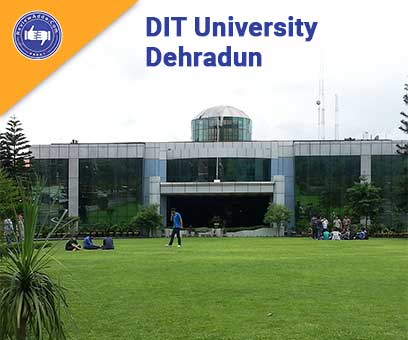
DIT University is a popular choice amongst students in Dehradun and by extension, Uttaranchal
DIT University UG admissions for engineering and architecture aspirants are conducted through their respective performance in JEE Mains. The counselling for these courses is held at DIT University’s campus a few weeks after the declaration of JEE Mains results.
 Get Updated Review ( Voice Based Alumni Feeback)
Get Updated Review ( Voice Based Alumni Feeback)
-
 Check Review (Alumni Feedback) - Lovely Professional University - [LPU] – Click Here
Check Review (Alumni Feedback) - Lovely Professional University - [LPU] – Click Here -
 Check Review (Alumni Feedback) - Amity University – Click Here
Check Review (Alumni Feedback) - Amity University – Click Here -
 Check Review (Alumni Feedback) - DIT University Dehradoon – Click Here
Check Review (Alumni Feedback) - DIT University Dehradoon – Click Here -
 Check Review (Alumni Feedback) - Chitkara University – Click Here
Check Review (Alumni Feedback) - Chitkara University – Click Here -
 Check Review (Alumni Feedback) - Ansal University – Click Here
Check Review (Alumni Feedback) - Ansal University – Click Here
The bodies accrediting include AICTE and UGC. DIT University is also a member of the Association of Indian Universities (AIU).
DIT University Academics
The academic structure of DIT University is divided on the basis of different departments. The different departments at DIT University are:
- Department of Engineering
- Faculty of Architecture and Design
- Department of Pharmacy
- Department of Physics
- Department of Computer Applications
- Department of Chemistry
- Department of Mathematics
- Department of Humanities & Social Sciences
- Department of Management Studies
DIT University Course details
12 courses, including integrated programs, are offered at DIT University through its various departments. The DIT University course details for these courses are mentioned below, namely the duration and fees.
|
Course |
Duration |
Fee per annum (INR) |
|
Bachelor of Technology (B.Tech) |
4 |
2,02,925/- |
|
Bachelor of Pharmacy (B.Pharm) |
4 |
1,04,550/- |
|
Bachelor of Architecture (B.Arch) |
5 |
2,27,900/- |
|
Bachelor of Technology + Master of Technology (B.Tech +M.Tech) |
5 |
1,24,920/- |
|
Master of Technology (M.Tech) |
2 |
1,42,900/- |
|
Master Of Pharmacy (M.Pharm) |
2 |
1,06,000/- |
|
Master of Business Administration (MBA) |
2 |
2,12,500/- |
|
Master of Science (M.Sc) |
2 |
77,200/- |
DIT University placements
DIT University placements have been impressive to say the least over the past few years. The median salary package for B.Tech students is INR 3.36 LPA. The image below highlights the performance of DIT over the years.
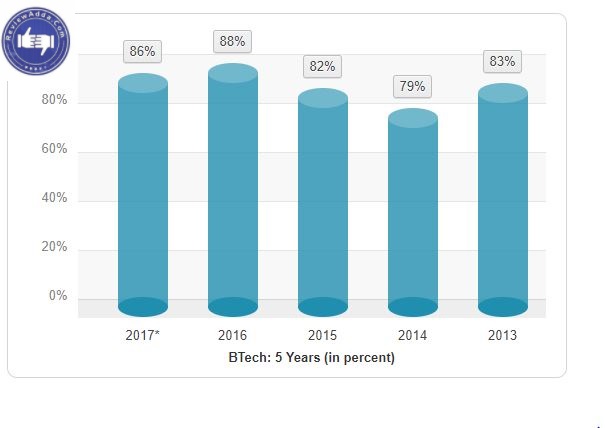
Placements at DIT have been excellent for the past five years
Graphic Era University, Dehradun
Graphic Era University is another top university on the block in Dehradun. Established as Graphic Era Institute of Technology in 1993, it was accorded ‘deemed-to-be’ university status in 2008.
Accredited and approved by AICTE and UGC respectively, Graphic Era is also graded ‘A’ by NAAC. It is also a member of the Association of Indian Universities (AIU). The University was awarded the Best Regional Award by the European Business Assembly in 2015 and the International Quality Summit Gold Award in 2016.
With over 7000 students studying at the university campus in Dehradun, GEU is easily amongst the biggest universities in Uttaranchal.
Graphic Era Academics
Like most private colleges and universities in India, Graphic Era also offers UG and PG programs through various departments. These departments have been listed below:
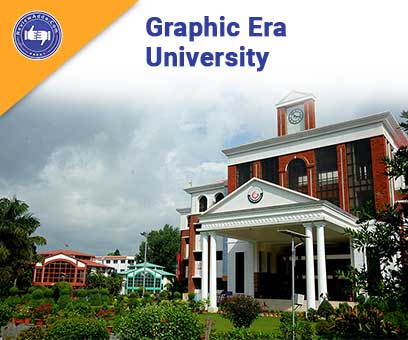
Graphic Era is also counted amongst some of the viable options for higher education in Uttaranchal
- School of Engineering and Technology
- School of Management Studies
- School of Commerce
- Department of Management Studies
- Department of Computer Applications
- Department of Humanities and Social Sciences
- Department of Life Sciences
Graphic Era Course details
Graphic Era University courses count over to 14 in total. The course details of these programs, namely duration and fee are in the table below:
|
Course |
Duration |
Fee per annum (INR) |
|
Bachelor of Technology (B.Tech) |
4 |
2,35,248/- |
|
Bachelor of Computer Application (BCA) |
3 |
1,13,670/- |
|
Bachelor of Science (B.Sc) |
3 |
1,13,670/- |
|
Bachelor of Hotel Management (BHM) |
4 |
1,18,238/- |
|
Bachelor of Business Administration (BBA) |
3 |
1,45,000/- |
|
Bachelor of Commerce (B.Com) |
3 |
1,45,000/- |
|
Master of Technology (M.Tech) |
2 |
1,23,135 /- |
|
Master of Hotel Management (BHM) |
2 |
74,635/- |
|
Master of Business Administration (MBA) |
2 |
2,19,635/- |
|
Master of Science (M.Sc) |
2 |
99,635/- |
|
Master of Computer Applications (MCA) |
3 |
1,51,670/- |
Graphic Era Placements
Graphic Era University’s placement record has been pretty steady over the past few years. The highlights of placements at Graphic Era University are in the table below:
|
Year Factor |
2015 |
2016 |
2017 |
|
Number of students placed |
638 |
554 |
460 |
|
Number of students graduating |
881 |
675 |
616 |
|
Percentage of students placed |
72.41% |
82% |
74.67% |
|
Median Salary (INR) |
2.2 LPA |
2.8 LPA |
3 LPA |
ICFAI University Dehradun
ICFAI University Dehradun stands amongst the top ranked institutions in Uttaranchal. ICFAI itself has a long history in the education sector, with its associate universities spanning the length and breadth of the country. While ICFAI came into being way back in 1984 with the establishment of its Hyderabad campus, its Dehradun campus was instituted in 2003.
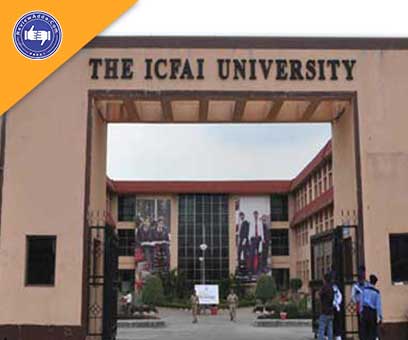
ICFAI is a very popular brand in India for UG education and its Dehradun campus hold significant clout
Spread over 59 acres, ICFAI Dehradun has slowly become a reliable option for students in the state for higher education. It has the necessary accreditation from AICTE and NCTE as well, not to mention full approval from UGC.
UG admissions at ICFAI Dehradun are conducted through performance in qualifying exam. B.Tech aspirants have to apply through their respective JEE Mains Score while other candidates are offered admission based on their performance in qualifying exam and the subsequent interview.
ICFAI Dehradun Academics
All ICFAI campuses offer courses through distinct schools of learning. Each school is assigned one specific field to cover. The various schools at ICFAI Dehradun are:
- ICFAI Business School
- ICFAI Tech School
- ICFAI Law School
- ICFAI Education School
ICFAI Dehradun Course Details
ICFAI Dehradun courses tally up to 15, which further broadens the horizon of the university in terms of curriculum and student diversity.
|
Course |
Duration |
Fee per annum (INR) |
|
Bachelor of Technology (B.Tech) |
4 |
1,22,500/- |
|
Bachelor of Education (BEd) |
2 |
57,000/- |
|
Bachelor of Business Administration (BBA) |
3 |
97,000/- |
|
Bachelor of Commerce (B.Com) |
3 |
80,000/- |
|
Master of Technology (M.Tech) |
2 |
77,500/- |
|
Bachelor of Business Administration + Master of Business Administration ( BBA + MBA) |
4 |
1,57,000/- |
|
Bachelor of Science (B.Sc) |
3 |
46,000/- |
|
Bachelor of Arts (BA) |
3 |
55,000/- |
|
Bachelor of Arts + Bachelor of Law (BA +LLB) |
5 |
93,000/- |
|
Bachelor of Business Administration + Bachelor of Law (BBA +LLB) |
5 |
93,000/- |
ICFAI Dehradun Placements
Over 32 top companies visited ICFAI Dehradun campus last year for placements. Some of the highlights of the recruitment is in the table below
|
Type |
CTC (INR) |
|
Average CTC |
3.84 LPA |
|
Highest CTC |
6.66 LPA |
|
Average CTC of Top 10% students |
6.01 LPA |
|
Average CTC of Top 25% students |
5.22 LPA |
The Comparison
We will lastly move on to the comparison between the four aforementioned universities. The comparison will be done based on the factors mentioned previously.



